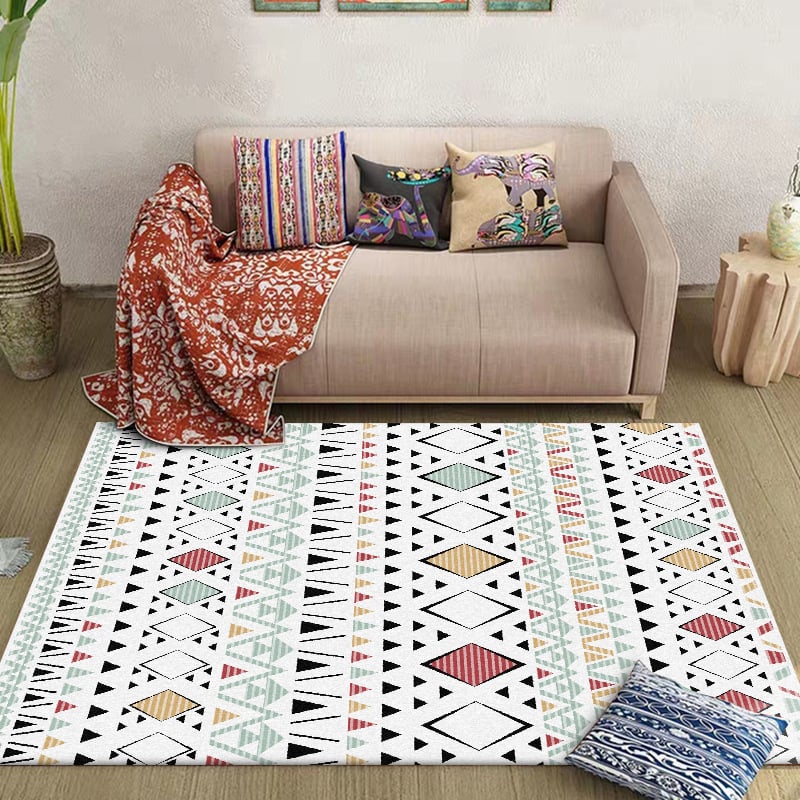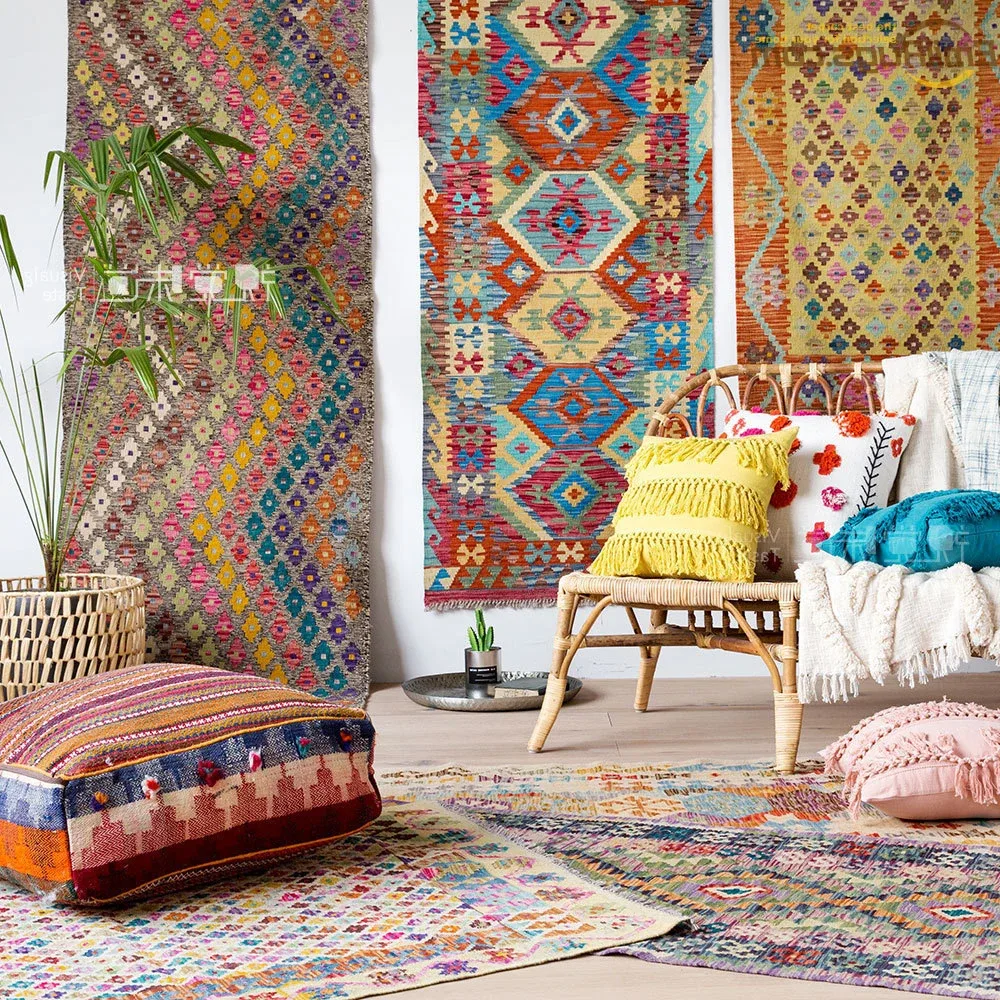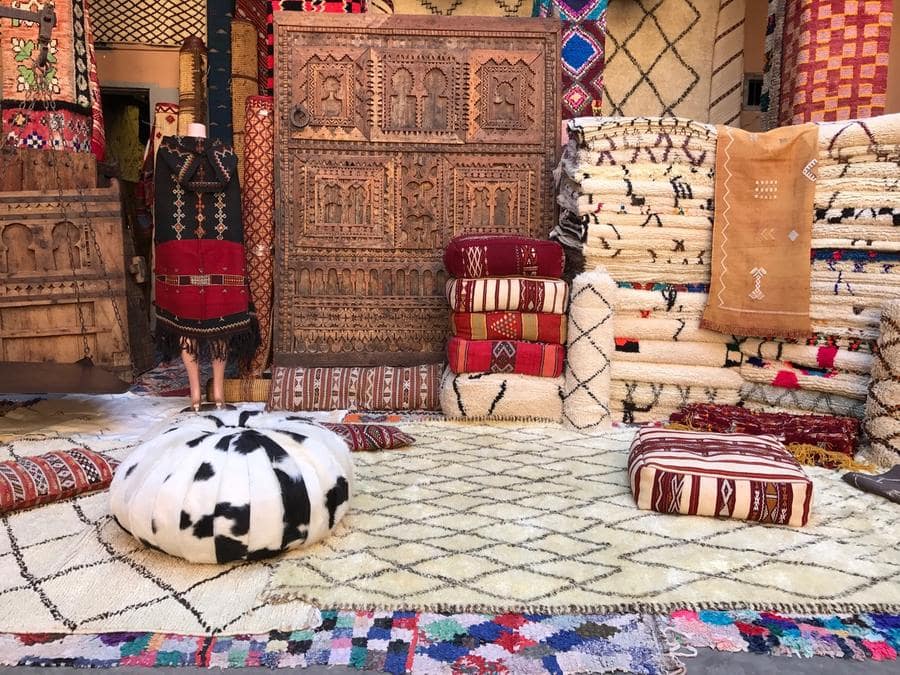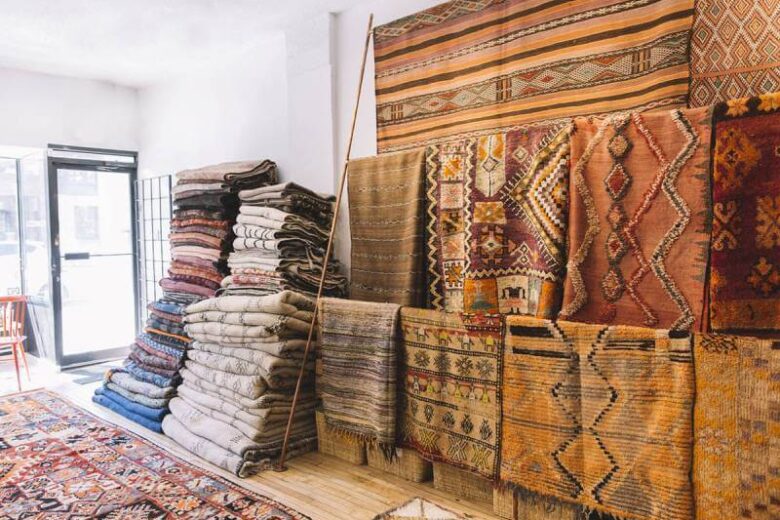Moroccan rugs have long been celebrated for their intricate designs, cultural significance, and craftsmanship. Whether you’re an interior designer curating a sophisticated space, a home décor enthusiast hunting for a statement piece, or a collector eager to own a slice of heritage, Moroccan rugs offer timeless appeal.
But beyond their aesthetic allure, what makes these rugs special? How do you distinguish authentic pieces from imitations? And most importantly, how can you incorporate them into your space effectively? By the end of this post, you’ll not only appreciate the rich story behind Moroccan rugs but also have the practical tools to choose, care for, and style them with confidence.

A Brief History and Cultural Significance of Moroccan Rugs
Moroccan rugs are more than just home décor—they’re a window into the history and culture of this North African region. Woven by the Berber tribes for centuries, these rugs originally served practical purposes such as warmth in the colder Atlas mountain regions or bedding in the warmer deserts. Today, they’re cherished worldwide for their artistic and symbolic value.
Each rug tells a story. The designs, comprising geometric patterns, symbols, and vibrant colors, often represent fertility, protection, or the weaver’s personal experiences. Passed down through generations, this weaving tradition has cemented Moroccan rugs as a symbol of heritage and authenticity.
Exploring the Iconic Types of Moroccan Rugs

Understanding the various types of Moroccan rugs is essential for choosing the right piece for your space. Here are some of the most iconic styles you’ll encounter:
1. Beni Ourain Rugs
Recognized for their minimalist, black-and-white geometric patterns, Beni Ourain rugs are handwoven from the wool of the Berber sheep. They’re soft, luxurious, and ideal for modern or Scandinavian-inspired interiors.
2. Azilal Rugs
Azilal rugs, originating from the Azilal region, are more colorful compared to Beni Ourain rugs. Woven with a playful mix of wool and cotton, they feature vibrant patterns and freeform designs that make them a favorite for eclectic or bohemian spaces.
3. Boucherouite Rugs
Made from recycled textiles, Boucherouite rugs are a riot of bold colors and textures. These eco-friendly pieces are perfect for casual spaces, such as kids’ rooms or creative studios, adding an element of fun and quirkiness.
4. Kilim Rugs
Unlike other Moroccan rugs, Kilim rugs are flat-woven (lacking the plush texture of pile rugs) and feature intricate tribal patterns. They’re lightweight and versatile, making them an excellent choice for wall décor or layering.
How to Choose the Perfect Moroccan Rug

Selecting the right Moroccan rug requires balancing your style preferences with practical considerations. Here’s what to keep in mind when shopping for your piece of Moroccan art:
1. Define Your Style and Needs
Consider the space and ambiance you’re designing. For minimalist interiors, a Beni Ourain rug adds subtle elegance, while colorful Azilal or Boucherouite rugs bring life to neutral settings.
2. Evaluate Size
Measure your space to avoid mismatched dimensions. For example:
- Living Room: Ensure the rug anchors your furniture by extending slightly beyond the sofa or chairs.
- Bedroom: Place a rug under the bed, with ample overhang on all sides.
- Dining Room: Choose a rug large enough to accommodate the table and chairs, even when pulled out.
3. Choose a Color Palette
Identify a color scheme that complements your room. Traditional Moroccan rugs offer both neutral tones and bold, colorful options, making it easy to find one that fits.
4. Inspect Craftsmanship
Authentic Moroccan rugs are handwoven, displaying slight imperfections that mark their uniqueness. Check the back of the rug for irregular knots—this is often a sign of authenticity.
5. Understand Pricing
Quality Moroccan rugs are an investment. Prices vary depending on size, material (wool vs. synthetic), and intricacy. Beware of overly cheap options, as they’re often mass-produced imitations.
Styling Moroccan Rugs in Your Space
Once you’ve acquired the perfect Moroccan rug, integrating it into your home creates a harmonious and inviting aesthetic.
Living Room
Use your rug as a focal point. Pair a monochromatic Beni Ourain rug with a statement coffee table and neutral seating for an airy, modern feel.
Bedroom
Layer an Azilal rug under the bed for a cozy touch. Its vibrant colors will contrast beautifully with crisp, white linens.
Dining Room
A flat-woven Kilim rug is practical and easy to clean, ideal for dining spaces. Its tribal patterns double as décor, adding warmth to the room.
Walls as Art
Smaller Moroccan rugs can also be hung on walls like tapestries, acting as bold art pieces that showcase their intricate designs.
Caring for Your Moroccan Rug
Proper care ensures the longevity of your Moroccan rug. Follow these maintenance tips to keep your investment looking pristine for years to come.
- Vacuum Regularly: Use a vacuum without a beater bar to avoid damaging the delicate fibers.
- Rotate Frequently: Rotating your rug every 6 months prevents uneven wear from foot traffic.
- Spot Clean: Tackle spills immediately using mild detergent and cold water. For wool rugs, avoid soaking to prevent shrinking.
- Professional Cleaning: Every 1-2 years, have your rug professionally cleaned to remove deep-seated dirt and preserve its texture.
- Avoid Direct Sunlight: Prolonged exposure to sunlight can fade colors. Use curtains or place the rug away from windows when possible.
Sourcing Authentic Moroccan Rugs
Finding a high-quality, authentic Moroccan rug can be trickier than it seems. Here are our tips for sourcing the best pieces:
- Buy from Trusted Vendors
Look for sellers specializing in Moroccan rugs, with a track record of credibility and positive reviews. Physical store recommendations include markets in Marrakech, Fez, or Casablanca.
- Ask for Certification
Authentic Moroccan rugs often come with a certificate of authenticity. Don’t hesitate to ask your seller for proof.
- Inspect Materials
Authentic rugs are typically made from natural materials like hand-spun wool or recycled textiles. Synthetic options might indicate inauthenticity.
- Negotiate Mindfully
If purchasing directly from Morocco, bargaining is expected. However, respect the craftsmanship and effort involved in creating these one-of-a-kind pieces.
Bring Craftsmanship & Culture Into Your Home
Moroccan rugs are more than floor coverings—they’re works of art that carry tradition, craftsmanship, and a piece of Moroccan culture into your home. From the sophisticated coziness of Beni Ourain rugs to the vibrant, eclectic feel of Azilal styles, the right Moroccan rug can elevate your space while telling its own story.
Want expert guidance on integrating Moroccan rugs into your home? Contact us today for personalized advice on selecting and styling these timeless masterpieces.
By JobHijra

